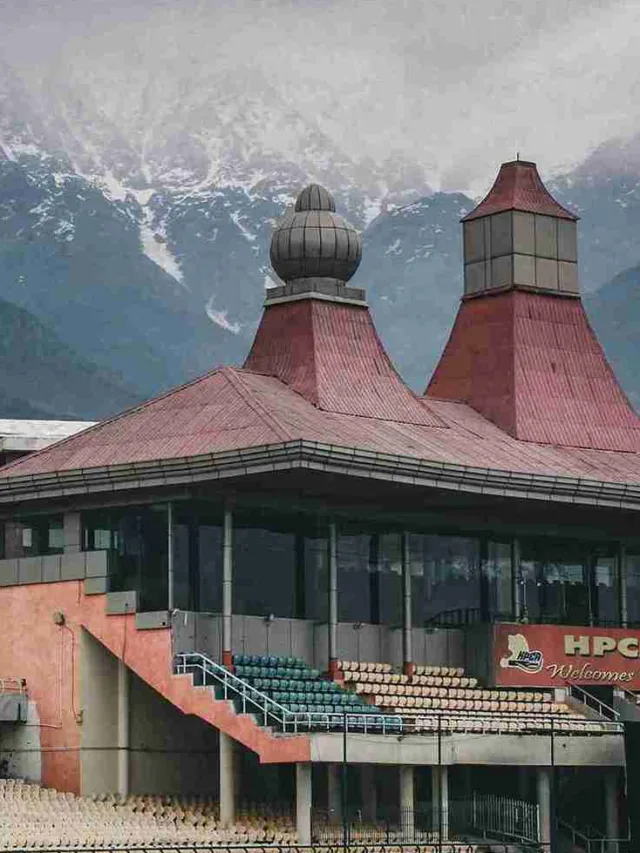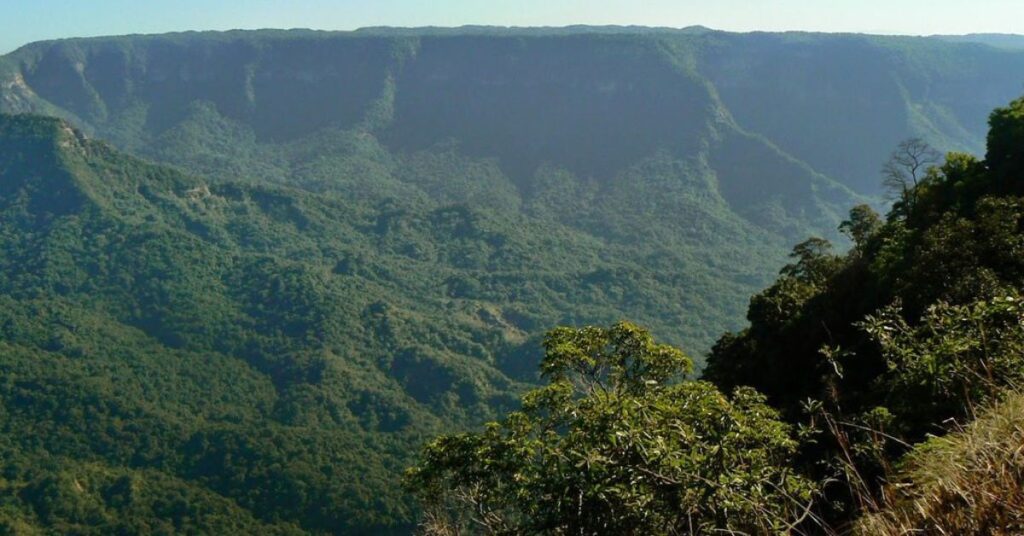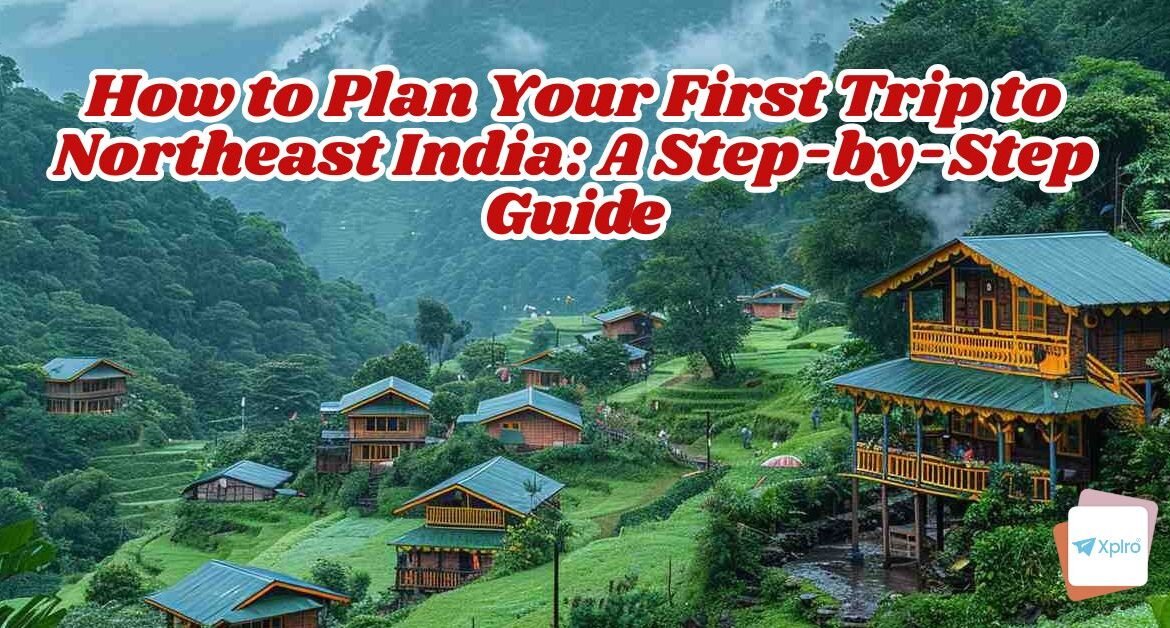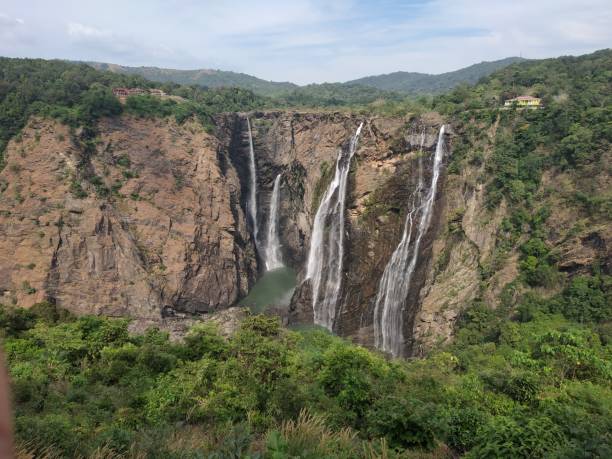If you’re wondering How to Plan Your First Trip to Northeast India, this detailed step-by-step guide is your perfect starting point. The Northeast is a land of misty mountains, vibrant tribes, breathtaking waterfalls, and untouched natural beauty — but planning a first trip here can feel overwhelming.
In this blog, we’ll walk you through everything you need to know — from choosing the best states and creating an ideal itinerary to getting travel permits, understanding local culture, and finding the right season to visit. Whether you’re a solo traveler, couple, or group explorer, you’ll learn how to plan a trip to Northeast India smartly, affordably, and safely.
Get ready to uncover the charm of Assam’s tea gardens, Meghalaya’s living root bridges, Arunachal’s monasteries, and Nagaland’s festivals. Your first Northeast India adventure starts right here — with the right plan and this complete guide by your side!
- Step 1: Understand the Geography and Culture
- The Eight States at a Glance
- Step 2: Choose the Best Time to Visit
- Step 3: Pick Your Route and States
- Step 4: Check Permit Requirements
- Step 5: Book Your Transport
- Step 6: Choose Your Accommodation
- Step 7: Pack Smart
- Step 8: Respect Local Culture and Environment
- Step 9: Include Must-Do Experiences
- Bonus: Sample 10-Day Itinerary for First-Timers
- Conclusion
- FAQs
Step 1: Understand the Geography and Culture
Before diving into logistics, get familiar with the region’s layout and cultural diversity.
The Eight States at a Glance
| State | Highlights | Best For |
|---|---|---|
| Assam | Kaziranga, tea gardens, Brahmaputra River | Wildlife, river cruises |
| Meghalaya | Living root bridges, caves, waterfalls | Nature, adventure, clean villages |
| Arunachal Pradesh | Tawang Monastery, Ziro Valley | Buddhism, tribal culture |
| Nagaland | Hornbill Festival, tribal villages | Cultural immersion |
| Manipur | Loktak Lake, Ima Market | Unique landscapes, women-led markets |
| Mizoram | Hills, bamboo forests | Offbeat trekking, serenity |
| Tripura | Ujjayanta Palace, Neermahal | Heritage, lakeside retreats |
| Sikkim | Gangtok, Gurudongmar Lake, monasteries | Mountains, spirituality |
Cultural Tips
- Respect local customs and dress modestly.
- Learn a few greetings in local dialects.
- Avoid plastic and support local artisans.
Step 2: Choose the Best Time to Visit
Northeast India experiences varied climates. Your travel window will depend on your interests.
Seasonal Breakdown
| Season | Months | Pros | Cons |
|---|---|---|---|
| Spring | March–May | Pleasant weather, blooming flora | Slightly crowded |
| Monsoon | June–September | Lush greenery, waterfalls | Landslides, travel delays |
| Autumn | October–November | Festivals, clear skies | Peak season prices |
| Winter | December–February | Snow in Sikkim, fewer tourists | Cold in high altitudes |
Pro Tip: October and November are ideal for cultural festivals and scenic beauty.
Step 3: Pick Your Route and States
Don’t try to cover all eight states in one go. Instead, choose 2–3 based on your interests.
Sample Itineraries
1. Nature & Adventure (7–10 Days)
2. Culture & Spirituality (10–14 Days)

States: Arunachal Pradesh + Sikkim
Highlights: Tawang, Ziro, Gangtok, Rumtek Monastery
3. Offbeat & Immersive (10 Days)

States: Nagaland + Manipur
Highlights: Hornbill Festival, Loktak Lake, tribal villages
Step 4: Check Permit Requirements
Some states require special permits for Indian and foreign travelers.
Permit Guide
| State | Permit Type | Who Needs It | How to Apply |
|---|---|---|---|
| Arunachal Pradesh | ILP | Indians | Online via Arunachal ILP portal |
| Nagaland | ILP | Indians | Online or at entry points |
| Mizoram | ILP | Indians | Online or at state offices |
| Sikkim (Restricted Areas) | PAP | Foreigners | Through registered tour operators |
ILP = Inner Line Permit, PAP = Protected Area Permit
Step 5: Book Your Transport
Getting to Northeast India is easier than ever, but internal travel requires planning.
Getting There
- By Air: Guwahati (Assam) is the main gateway. Other airports: Imphal, Agartala, Shillong, Gangtok (Pakyong).
- By Train: Guwahati, Silchar, and Dimapur are major railheads.
- By Road: Well-connected but slow; ideal for scenic drives.
Getting Around – How to Plan Your First Trip to Northeast India
| Mode | Best For | Notes |
|---|---|---|
| Shared taxis | Budget travel | Available in most towns |
| Private cabs | Comfort and flexibility | Book via local operators |
| Buses | Intercity travel | Limited frequency |
| Scooters | Local exploration | Available in Shillong, Gangtok |
Step 6: Choose Your Accommodation
From homestays to boutique resorts, Northeast India offers diverse lodging options.
Recommended Stay Types
- Homestays: Ideal for cultural immersion (e.g., in Nagaland, Ziro)
- Eco-lodges: Great for sustainability-focused travelers
- Budget hotels: Available in major towns
- Luxury resorts: Found in Gangtok, Shillong, Kaziranga
Affiliate Tip: Link to booking platforms with commission-based referrals.
Step 7: Pack Smart
Weather and terrain vary widely. Pack light but wisely.
Packing Checklist
- Layered clothing (for cold and warm zones)
- Rain gear (especially during monsoon)
- Trekking shoes
- Power bank and torch
- Reusable water bottle
- Basic medicines and first-aid
- Copies of permits and ID
Step 8: Respect Local Culture and Environment
Northeast India is ecologically and culturally sensitive.
Responsible Travel Tips
- Avoid single-use plastics
- Support local businesses and guides
- Don’t photograph people without permission
- Stick to marked trails while trekking
- Participate in community tourism initiatives
Step 9: Include Must-Do Experiences
Make your trip memorable by adding unique experiences.
Bucket-List Activities
- Meghalaya: Walk the living root bridges in Nongriat
- Assam: Spot rhinos in Kaziranga National Park
- Nagaland: Attend the Hornbill Festival in December
- Manipur: Boat on Loktak Lake’s floating phumdis
- Sikkim: Visit Gurudongmar Lake and Rumtek Monastery
- Arunachal Pradesh: Explore Tawang and Ziro Valley
Bonus: Sample 10-Day Itinerary for First-Timers
Meghalaya + Assam
| Day | Destination | Activities |
|---|---|---|
| 1 | Guwahati | Arrive, visit Kamakhya Temple |
| 2 | Shillong | Umiam Lake, local cafes |
| 3 | Cherrapunji | Waterfalls, caves |
| 4 | Nongriat | Trek to living root bridges |
| 5 | Dawki | Boating on crystal-clear river |
| 6 | Kaziranga | Safari, tea garden visit |
| 7 | Majuli Island | Ferry ride, satras (monasteries) |
| 8 | Jorhat | Cultural walk, local market |
| 9 | Guwahati | Shopping, Brahmaputra sunset cruise |
| 10 | Departure | Fly out |
Conclusion
Planning your first trip to Northeast India is more than just logistics—it’s an invitation to immerse yourself in one of the most culturally rich and ecologically diverse regions of the country. From the misty hills of Meghalaya to the spiritual serenity of Sikkim, every state offers a unique rhythm, story, and soul.
By following this step-by-step guide, you’ll not only avoid common travel pitfalls but also unlock deeper, more meaningful experiences. Whether you’re trekking to living root bridges, sipping tea in Assam, or celebrating tribal festivals in Nagaland, your journey will be one of discovery, connection, and transformation.
So pack your curiosity, respect the land and its people, and let Northeast India surprise you in the most beautiful ways.
FAQs
1. What is the best time to visit Northeast India for first-time travelers?
The ideal time is October to April, when the weather is pleasant and festivals like Hornbill and Tawang are in full swing.
2. Do I need permits to travel in Northeast India?
Yes. Indian citizens need Inner Line Permits (ILP) for Arunachal Pradesh, Nagaland, and Mizoram. Foreigners require Protected Area Permits (PAP) for certain regions like Arunachal Pradesh and Sikkim.
3. How many days are enough to explore Northeast India?
Plan for 10–14 days to comfortably explore 2–3 states without rushing.
4. Which states should I visit on my first trip to Northeast India?
Start with Meghalaya, Assam, and Sikkim for a mix of nature, culture, and accessibility.
5. Is Northeast India safe for solo travelers?
Yes, especially in Meghalaya, Sikkim, and Assam. Locals are welcoming, and crime rates are low in tourist zones.
6. What are the must-visit places in Northeast India?
Top spots include:
- Kaziranga National Park (Assam)
- Living Root Bridges (Meghalaya)
- Tawang Monastery (Arunachal Pradesh)
- Loktak Lake (Manipur)
- Gangtok & Gurudongmar Lake (Sikkim)
7. How do I reach Northeast India by flight or train?
Fly into Guwahati, Imphal, or Bagdogra. Major train stations include Guwahati, Silchar, Dimapur, and New Jalpaiguri.
8. What kind of accommodation is available in Northeast India?
Options range from budget hostels and homestays to eco-lodges and boutique resorts, especially in Shillong, Gangtok, and Kaziranga.
9. What should I pack for a Northeast India trip?
Essentials include:
- Layered clothing
- Rain gear
- Trekking shoes
- Power bank
- Reusable water bottle
- Copies of permits and ID
10. Can I use mobile networks and internet in Northeast India?
Yes, but connectivity may be patchy in remote areas. Airtel and Jio offer the best coverage.
11. What are the top festivals to attend in Northeast India?
Don’t miss:
- Hornbill Festival (Nagaland, December)
- Ziro Music Festival (Arunachal Pradesh, September)
- Wangala Festival (Meghalaya, November)
12. Is vegetarian food easily available in Northeast India?
Yes, especially in Sikkim, Assam, and Meghalaya. Many homestays and restaurants cater to vegetarian diets.
13. How much does a Northeast India trip cost?
A 10-day trip can cost between ₹25,000–₹60,000, depending on your travel style, accommodation, and transport choices.
14. Are there ATMs and card payment options in Northeast India?
Yes, but carry cash in remote areas. Major towns accept UPI and cards.
15. What are the best trekking routes in Northeast India?
Top treks include:
- Dzukou Valley (Nagaland)
- Sandakphu Trek (Sikkim)
- Nongriat Root Bridge Trek (Meghalaya)
16. Can I travel Northeast India with kids or elderly family members?
Yes. Choose Assam, Sikkim, and Meghalaya for easier terrain, better infrastructure, and family-friendly activities.
17. What languages are spoken in Northeast India?
English is widely understood. Locals also speak Hindi, Assamese, Bengali, and tribal dialects.
18. Is Northeast India good for eco-friendly travel?
Absolutely. Many regions promote community-based tourism, plastic-free zones, and sustainable homestays.
19. How do I book local transport in Northeast India?
Use:
- Shared taxis and sumos
- Private cabs via local operators
- Scooter rentals in Gangtok and Shillong
20. Can I include Northeast India in a larger India itinerary?
Yes. Combine it with West Bengal (Darjeeling, Kalimpong) or Bhutan for a diverse Himalayan experience.







